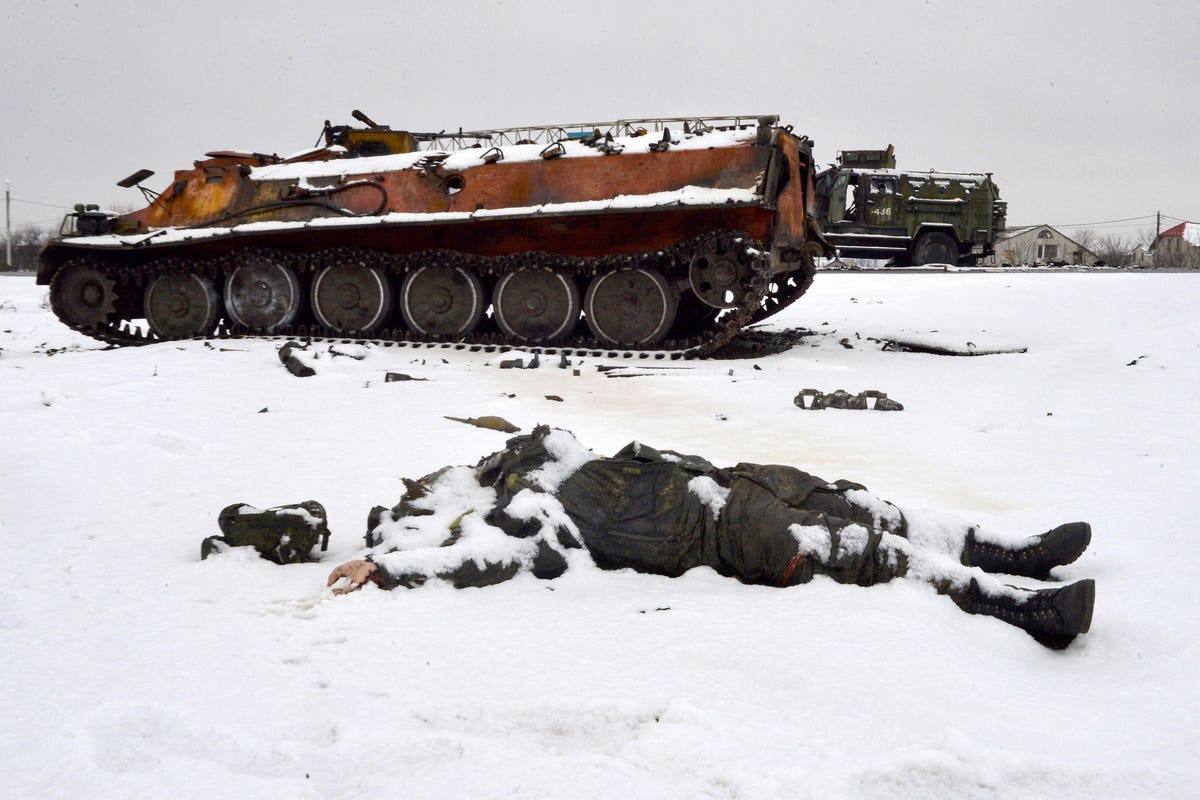The ability of the Russian soldier to keep fighting while enduring terrible conditions, indifferent leadership and tactical hopelessness has mystified Russia’s rivals for over a century. Despite the Russian soldier’s reputation for endurance, Russia’s bedraggled front-line fighters offer Ukraine some fascinating targets for systematic demoralization.
By almost every conventional measure, Russia’s army is at the end of its tether. With Russia’s modern tanks and armored vehicles largely gone or inoperative, Russia is pulling late 1940’s vintage T-10 tanks and other mechanized relics out of storage. Russian leaders are virtually begging North Korea, Iran, China and other former client states for help. Russian conscripts are arriving on the front under-equipped and then sent into the trenches to largely shift for themselves.
Russian morale is reportedly poor, and yet, Russia’s front-line fighters keep on fighting. Even after the failed Wagner mutiny, efforts to degrade the will of Russia’s front-line fighters still seems somewhat controversial. Outside of detailing battlefield wins, efforts to chip away at Russian morale still seem somewhat halting and disorganized, when these efforts should be a major—and often highlighted—strategic focus for both Ukraine and all of Ukraine’s friends.
Russian Morale Is A Viable Target
To dent Russian endurance, Ukraine is engaging in deep public strikes throughout Russia, hitting ceremonial locations and logistical supply lines, encouraging surrenders and supporting defections. Intelligence agencies throughout the world are, in their own polite ways, encouraging disaffected Russians to walk away from the Putin regime.
These are all great initiates, but Russian soldiers and units at the front have yet to break en masse.
Russia’s conscripts may feel they lack options. Russia has long preferred to cultivate a sense of hopelessness in their front-line fighters, encouraging “trapped” soldiers to keep fighting.
It is a signature feature of Russian fighting. In the desperate days of World War II, Russia gave front-line fighters few options. According to German Army officer Hans Van Luck, Russian troops were kept in check by leaders who said, “if you fall into German captivity, you’ll be killed at once. If you take just one step back, we’ll kill you.”
Similar motivational exercises are happening today. Russian “blocking” units target those soldiers who retreat or surrender, and Ukraine is likely a tad too overeager in exchanging Russian convicts or Putin’s more rough-hewn conscripts, returning captured Russians to an uncertain fate—punishment, a penal battalion or worse.
Front-line Russian troops may respond well to a realistic opportunity to exit the fighting. Both Ukraine and Ukraine’s friends can certainly do more to help Russia’s bedraggled conscript army realize it has more options than death, suffering or ignominious penal assignments after a return from a Ukrainian prisoner of war camp.
What Can Ukraine and Ukraine’s Allies Do?
Ukraine is already doing a lot to “bring the war home” across Russia. Of course, Ukraine’s friends could always do more to coordinate economic and political efforts with the Ukrainian battlefield.
But the easiest place to start is in Kyiv. Ukraine can encourage a shift in the rhetorical approach to Russia’s front-line troops. Rather than portray the invaders as “orks” or worse, some expressions of empathy might be in order. Many of Russia’s conscripts are likely from lower socio-economic classes who were in the wrong job or wrong place at the wrong time. A more sympathetic—albeit still ruthless—public approach to Russian front-line fighters might work wonders if Ukraine can get their attention.
No front-line trooper particularly likes managing captured adversaries, but Ukraine’s troops must take pains to publicize their efforts to process Russian battlefield “emigres” respectfully and efficiently. Ukraine certainly relishes disseminating social media images of scared and bound Russian captives. But showing a far more gentle touch—simple stuff like front-line Ukrainians giving captured Russians a drink or medical care—will make a lasting impression on any Russians who see it.
In the months leading up to his untimely demise, Wagner leader Yevgeny Prigozhin successfully embraced Russia’s poorer socioeconomic groups, building public support by railing against corruption or other easily-grasped battlefield insults. Emphasizing sympathy for Russians fated to suffer from corrupt leaders, or empathizing with Russians unable to bribe their way off the front lines will find a ready audience in Russia’s tired ranks of conscripts.
If publicized, a Ukrainian campaign to identify, highlight and investigate Russia’s use of blocking troops—soldiers deployed to shoot their retreating compatriots—as war crimes might also resonate with front-line Russian conscripts.
On Ukraine’s part, it might be well worth building and highlighting some showpiece Prisoner of War (POW) camps, crafted so Russian POWs can enjoy a better quality of life than they might experience at home. To encourage wider defections, Ukraine’s friends with large Russian émigré populations have an opportunity to publicly mull amenities, proffering the idea of extending emigration offers to Russian soldiers and other officials who, upon surrendering, redeem themselves. Even if these ideas were unrealistic from the start, hope for a better future is a powerful motivator.
Processing captured Russians for their potential to spread disillusionment is a priority as well. By selectively sorting Russian military prisoners for political utility, treating them with an eye towards encouraging Russian regime change, Ukraine can, in time, start raising the pressure on Russia’s internal security apparatus. Every prisoner exchanged with Russia should either be criminally irredeemable or an investment in future anti-Putin sentiment in Russia.
These days, wars aren’t just won on the battlefield alone. While psychological contributions are difficult to quantify, any cost-effective means to try and wear down Russia’s military and internal security apparatus is a viable strategy. But Kyiv cannot do it all. The rest of the world can help, advancing Ukrainian public messaging and quietly raising the pressure on Russian society, helping push Russia’s rag-tag conscript army towards collapse.
Read the full article here





